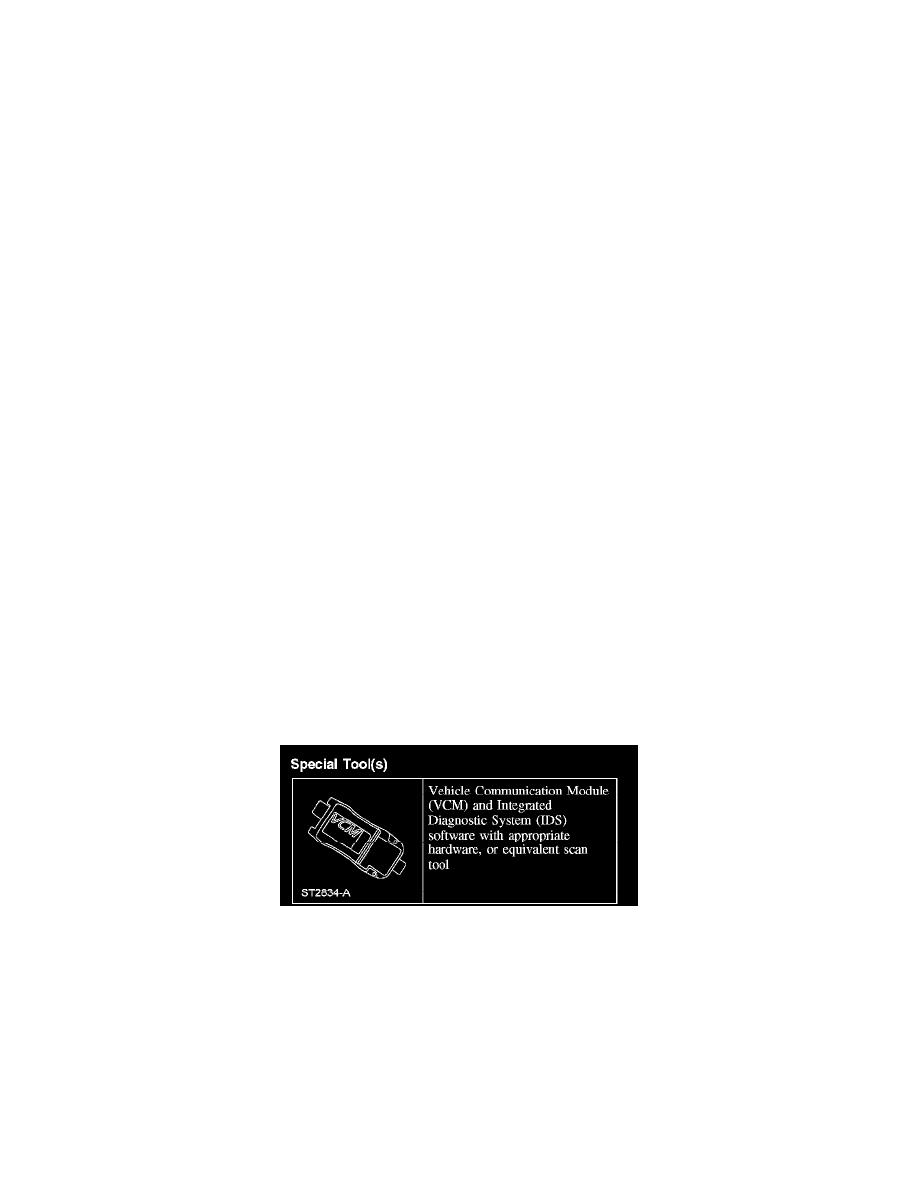E 150 V8-4.6L (2007)

Transmission Cooler: Component Tests and General Diagnostics
Transmission Fluid Cooler
Transmission Fluid Cooler
CAUTION: Whenever a transmission has been disassembled to install new parts, the cooler bypass valve (CBV), all transmission fluid
coolers (in-tank and auxiliary) and transmission fluid cooler lines must be cleaned and backflushed.
Use a suitable the torque converter/fluid cooler cleaner.
NOTE: Cleaning and backflushing the transmission fluid cooling system along with following all the normal cleaning and inspection procedures
during disassembly and reassembly will keep contamination from reentering the transmission and causing a repeat repair.
When internal wear or damage has occurred in the transmission, metal particles, clutch plate material or band material may have been carried into the
torque converter and transmission fluid cooler.
These contaminants are a major cause of recurring transmission troubles and must be removed from the system before the transmission is put back into
use.
Transmission Fluid Cooler Flow Test
Transmission Fluid Cooler Flow Test
NOTE: The transmission linkage/cable adjustment, fluid level and line pressure must be within specification before carrying out this test.
1. Remove fluid level indicator from fluid filler tube.
2. Place funnel in fluid filler tube.
3. With the vehicle in NEUTRAL, position it on a hoist. Refer to Maintenance/Service and Repair.
4. Remove the cooler return line (top fitting) from the fitting on the transmission case.
5. Connect one end of a hose to the cooler return line and route other end of the hose up to a point where it can be inserted into the funnel at the fluid
filler tube.
6. Remove the safety stands and lower the vehicle. Insert end of hose into the funnel.
7. Start the engine and run it at idle with the transmission in NEUTRAL.
8. When fluid flows from the hose in a steady stream, a liberal amount of fluid should be observed. "Liberal" is about 1 L (1 qt) delivered in 15
seconds. If a liberal flow is observed, the test is complete.
9. If the flow is not liberal, stop the engine. Disconnect the hose from the cooler return line and connect it to the converter outlet fitting (bottom
fitting) on the transmission case.
10. Repeat steps 6 and 7. If flow is now approximately 1 L (1 qt) in 15 seconds, refer to Transmission Fluid Cooler - Backflushing and Cleaning. If
the flow is still not approximately 1 L (1 qt) in 15 seconds, repair or install pump and/or converter.
Transmission Fluid Cooler
Transmission Fluid Cooler
Special Tool(s)
NOTE: Cleaning and backflushing the transmission fluid cooling system along with following all the normal cleaning and inspection procedures
during disassembly and reassembly will keep contamination from entering the transmission, causing a repeat repair.
When internal wear or damage has occurred in the transmission, metal particles or clutch plate material may have been carried into the torque
converter and transmission fluid cooler. These contaminants are a major cause of recurring transmission troubles and must be removed from the
system before the transmission is put back into use.
Transmission Fluid Cooler Flow Test
Transmission Fluid Cooler Flow Test
NOTE: The transmission linkage/cable adjustment, fluid level and line pressure must be within specification before carrying out this test. Refer to
Fluid Level Check. Refer to Line Pressure Test. See: Fluid - A/T/Testing and Inspection/Torqshift Automatic Transmission See: Transmission Control
